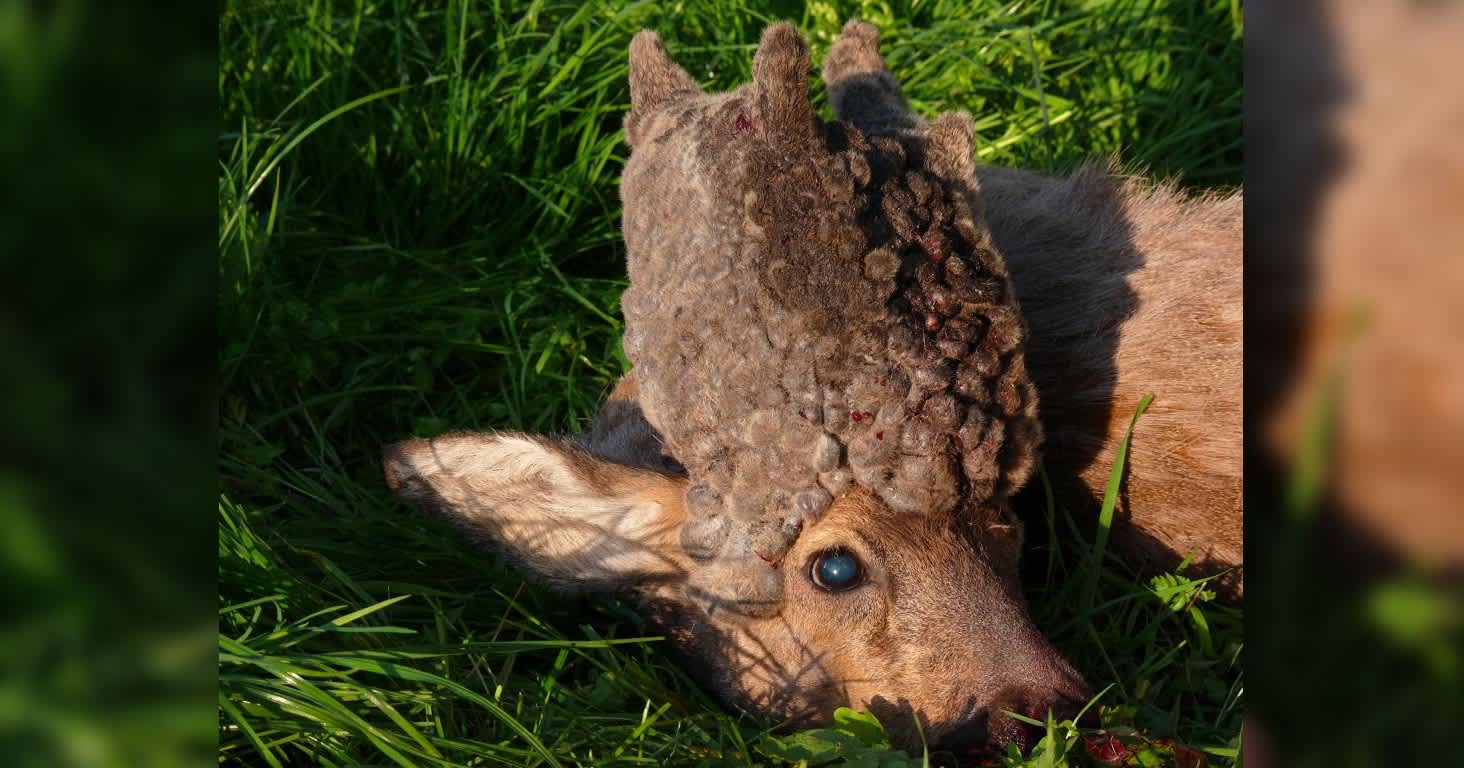7 Freaky Examples of “Cactus Buck” Syndrome
Daniel Xu 05.19.15

Is that a cactus growing out of that buck’s head?
Hunters who have never seen a so-called “cactus buck” may be utterly bewildered the first time they spot one of these strange deer. These bucks show no interest in mating, sometimes have the body of a doe, and perhaps most notably, have cactus-like growths where their antlers should be.
CardThese are what hunters call “cactus bucks.” The term is a catch-all for a certain type of antler deformity, but “true” cactus bucks are animals suffering from lowered testosterone production, which in turn affects growth of their antlers. Generally, this is caused by injury to the testicles, which are a major producer of testosterone. Other causes can include tumors or even diseases like epizootic hemorrhagic disease (EHD), which can damage the buck’s testicles or otherwise affect hormone production.
The condition of the buck’s antlers depends on when the injury occurs. If a deer is castrated as a fawn, it will never grow antlers in the first place. If the injury happens while the buck already has hardened antlers, the buck will usually shed their antlers almost immediately.
CardOn the other hand, if a buck is injured after it has shed its antlers, next season it will grow its last and permanent set, which will never be shed. Finally, when a buck is injured while still growing its antlers, it will keep them—and the velvet cover—for the rest of its life.
CardBucks with “permanent velvet” are the ones that end up with remarkable cactus-like growths. Does that grow antlers may also sometimes assume the same appearance, as do deer suffering from other conditions, so it is sometimes hard to identify a cactus buck.
In addition, cactus bucks are not considered to be remarkably rare, since sometimes the abnormality occurs naturally without any kind of injury.
No matter what, they’re some of the oddest antlers you will ever see.
Wow deer
